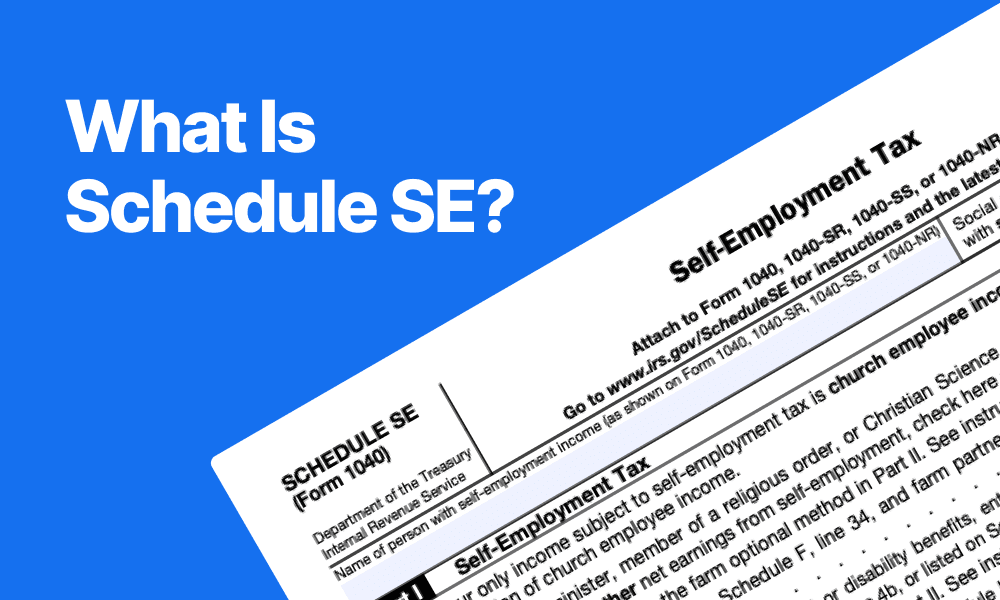What Is Schedule SE? A Guide for Self-Employed Taxpayers | TAXtical

Schedule SE (Form 1040): What It Is, Who Needs It, and Why It Matters for Self-Employed Taxpayers
If you're among the growing number of freelancers, independent contractors, or small business owners, you're likely familiar with the excitement and flexibility that comes with being your own boss. However, self-employment also brings unique tax responsibilities. One of the most important forms you'll encounter is IRS Schedule SE, Self-Employment Tax.
In this blog, TAXtical explains:
What Schedule SE is
Who must file it
What types of income are subject to self-employment tax
How to calculate and file your self-employment taxes
How TAXtical can help ensure accurate, IRS-compliant filing
What Is Schedule SE?
Schedule SE (Self-Employment Tax) is a supplemental form attached to your Form 1040. It is used to calculate self-employment (SE) tax, which covers Social Security and Medicare taxes for self-employed individuals.
When you work for an employer, these taxes are automatically withheld from your paycheck. But if you're self-employed, you’re responsible for calculating and paying both the employer and employee portions—a total of 15.3% (12.4% for Social Security and 2.9% for Medicare).
The IRS requires self-employed individuals to use Schedule SE to calculate how much self-employment tax they owe based on their net earnings.
Who Needs to File Schedule SE?
You must file Schedule SE if:
✅ You had net earnings of $400 or more from self-employment
✅ You are a sole proprietor, independent contractor, gig worker, or freelancer
✅ You are a partner in a business partnership
✅ You are a minister or clergy member with church-related income
✅ You earned farm income or other types of non-employee compensation (e.g., 1099-NEC)
Even if your total income isn’t high enough to owe federal income tax, you may still be required to file Schedule SE and pay self-employment tax.
What Income Is Subject to Self-Employment Tax?
Common sources of income reported on Schedule SE include:
Freelance or contract work
Small business or sole proprietorship income
Income reported on Schedule C or F
Farm income
Church employee income over $108.28
Side gigs (e.g., Uber, Etsy, consulting, etc.)
Your net earnings are typically calculated from your Schedule C or Schedule F, and that amount flows into Schedule SE to determine your self-employment tax liability.
How Is Self-Employment Tax Calculated?
Here’s a breakdown of how Schedule SE works:
Calculate Net Earnings
Take your net profit from Schedule C or F.Multiply by 92.35%
This is the portion of earnings subject to SE tax. The IRS allows you to deduct 7.65% as the “employer’s” portion.Apply the 15.3% Rate
Multiply your adjusted earnings by 15.3% to calculate your SE tax.Deduct Half on Form 1040
You can deduct 50% of your SE tax from your taxable income on your Form 1040.
Common Mistakes to Avoid
❌ Failing to file Schedule SE when required
❌ Misreporting net earnings from self-employment
❌ Forgetting to deduct half of the SE tax on Form 1040
❌ Incorrectly combining W-2 and 1099 income
❌ Overlooking SE tax when estimating quarterly taxes
How TAXtical Helps Self-Employed Taxpayers
Filing as a self-employed individual involves more than just a 1040. At TAXtical, we help you:
🔹 Calculate your net earnings from all sources
🔹 Accurately file Schedule SE and related forms
🔹 Plan and pay quarterly estimated taxes
🔹 Maximize deductions (home office, business expenses, etc.)
🔹 Avoid penalties and stay IRS-compliant
Need Help with Self-Employment Taxes?
Whether you’re a full-time freelancer or just earned extra income on the side, TAXtical is here to make sure your self-employment taxes are handled properly and efficiently.
📞 Contact us today to schedule a consultation and let us simplify your self-employment tax filing!

